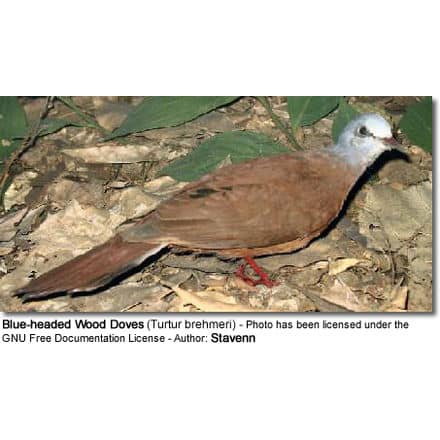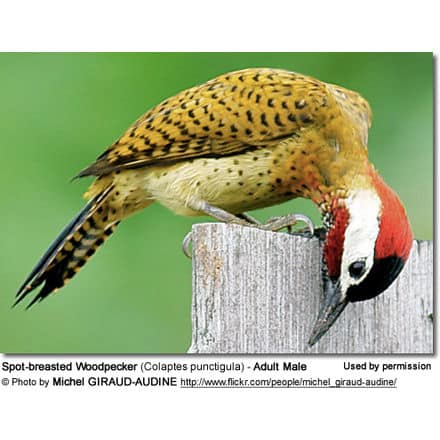Cardinals – Genus Cardinalis
The Cardinals or Cardinalidae are songbirds found in open woodland areas of North and South America. The Cardinals are seed-eating birds with strong bills.
The Cardinals or Cardinalidae are songbirds found in open woodland areas of North and South America.
Description:
The Cardinals are seed-eating birds with strong bills.
This species was named by colonists for the red plumage of the male Northern Cardinal, which is regarded as the best example of the generic characters of the genus; and the fact that the color is reminiscent of the Catholic cardinal’s vestments.
Males and females have distinct plumages, with the males having more red markings and the females being mostly brownish in color.
Juveniles look like females. Young males will grow in bright red feathers as he matures.
This species ranges in size from 4.7 inches to 9.8 inches depending on the family.
 Subspecies and Ranges
Subspecies and Ranges
Genus Cardinalis
-
- Northern Cardinal (Cardinalis cardinalis) – Found in southern Canada, through the eastern United States from Maine to Texas and south through Mexico
-
- Pyrrhuloxia aka Desert Cardinals (Cardinalis sinuatus) – Found in the U.S. states of Arizona, New Mexico, and Texas and northern Mexico
- Vermilion Cardinal (Cardinalis phoeniceus) – Found in Colombia and Venezuela
Genus Spiza
- Dickcissel (Spiza americana)
Nesting / Breeding
Cardinals typically mate for life. As part of their bonding behavior, males will collect food and feed the female beak-to-beak; or – during the breeding season – he will carry nesting materials, such as twigs, in his beak, taking it to the female to build the nest with. She will crush the thin twigs with her beak to make them pliable, and then pushes them as well as tree bark under her body into a cup shape with her feet. She lines the nest with plant material, such as grasses, stems, rootlets and pine needles. Nest construction usually aces about 3 – 9 days and is generally about 2 – 3 inches (5 – 8 cm) tall and 4 inches (~10 cm) across. The nests are usually well-concealed in dense shrub or a low tree about 3 – 10 feet (1 – 3 meters) off the ground. She builds a new one each season.
When nesting, he will feed the female as she is sitting on (incubating) the eggs. About one to six days after completion of the nest, she will lay about 2 – 4 glossy white eggs with a slight hint of .green, blue or brown, and marked with lavender, grey or brown blotches.
Even though the female does most of the incubation, the male may take over for short periods. The young hatch after about 12 – 13 days and will fledge (leave the nest) another 10 – 11 days after hatching.
Both the male and female feed and care for the young. They usually produce several clutches each year and the male may continue raising the young, while the female is incubating the next clutch of eggs.
 Songs / Vocalizations
Songs / Vocalizations
The songs vary regionally and are described as whistled song patterns repeated several times, such as “cheeeer-a-dote, cheeer-a-dote-dote-dote,” “purdy, purdy, purdy…whoit, whoit, whoit, whoit,” “what-cheer, what-cheer”, wheet, wheet, wheet, wheet” and cheer, cheer, cheer, what, what, what, what
Pairs use chipping noises to locate each other, or to warn each other in case of approaching danger.
Diet
Cardinals mostly feed on seeds, which make up about 90% of its diet. They typically forage on the ground.
They will also eat various insects, snails, as well as fruits and berries. Those species occurring in North America will drink maple sap dripping from tree holes made by sapsuckers.
Chicks are almost exclusively fed on insects, as they have a higher requirement for protein than adults.
Lifespan
The oldest wild Cardinal lived at least 15 years and 9 month. One captive bird reached 28.5 years. Chicks have a high mortality rate as they are commonly preyed on by other birds, reptiles or mammals
Species Research by Sibylle Johnson
Please Note: The articles or images on this page are the sole property of the authors or photographers. Please contact them directly with respect to any copyright or licensing questions. Thank you.

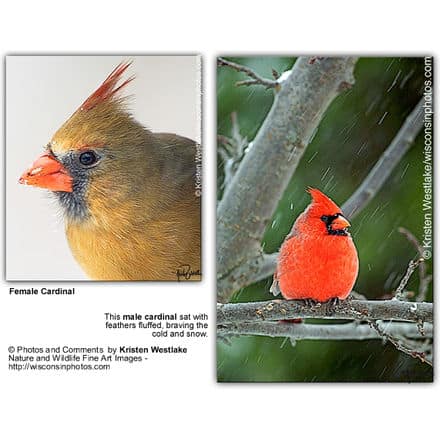
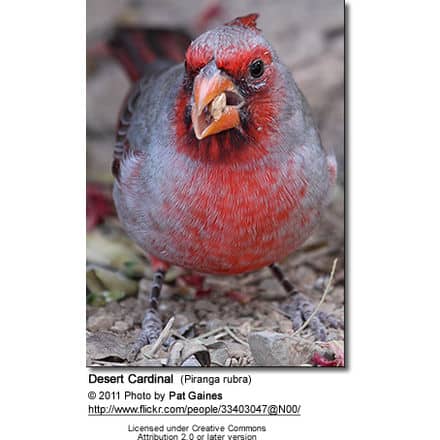
 Subspecies and Ranges
Subspecies and Ranges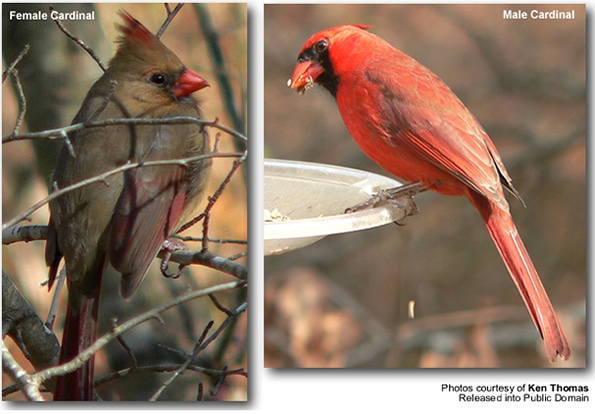
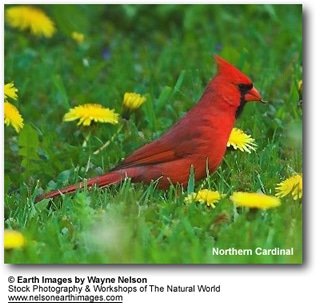 Songs / Vocalizations
Songs / Vocalizations
